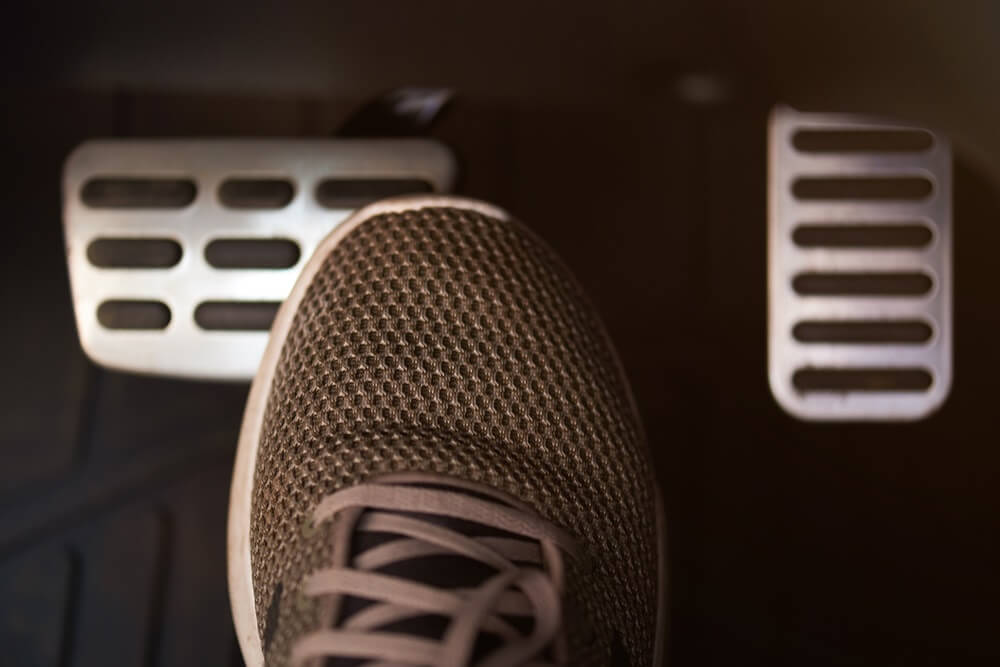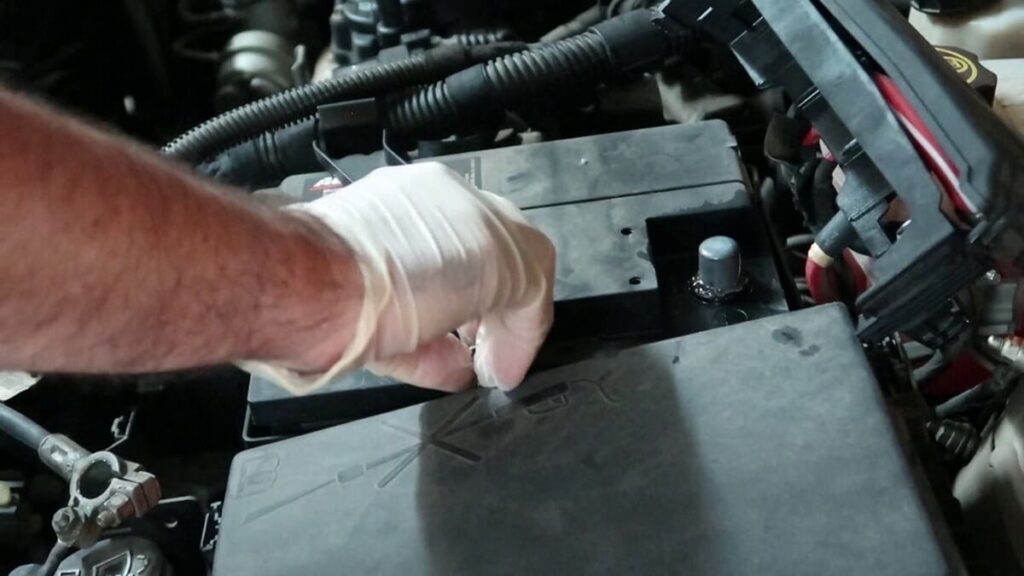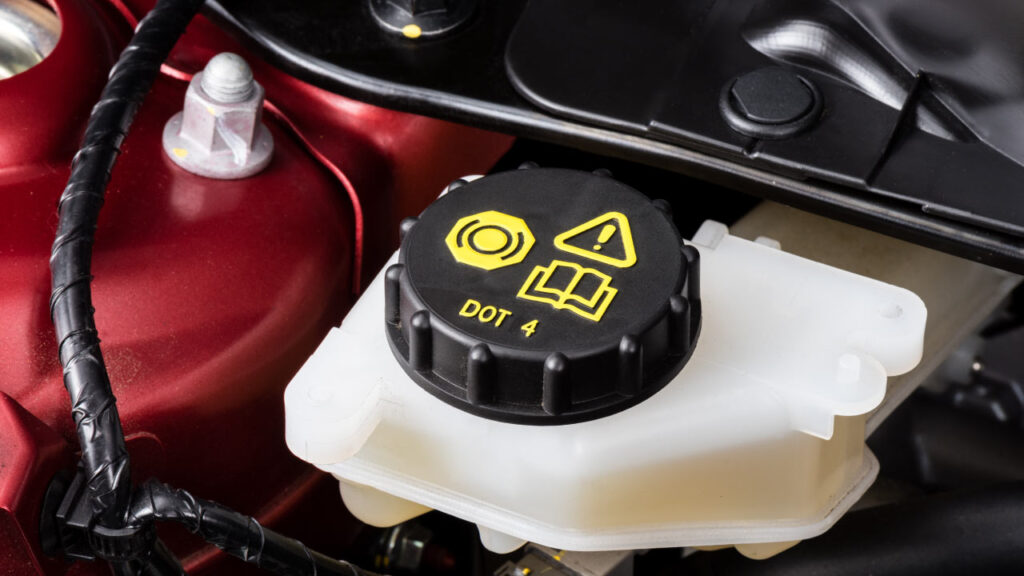Are you struggling to push your car’s brake pedal down, as it’s pretty stiff? Is this coming your way to start a car, and are you wondering if they are related? Well, this guide has got your back.
If you don’t want to get stuck in the middle of the road with difficulty pushing the stiff brake pedals and are looking for ways to fix this issue preventing your car from starting, keep reading this write-up.

Why Is My Break Pedal Stiff, and the Car Isn’t Starting?
If you are disappointed to see your brake pedal all stubborn and stiff and are curious to know the factors contributing to it, here are a few reasons I have listed for you. This way, you can easily recognize the problem and find a fix.
- Bad Battery
One of the primary reasons why you struggle to push the brake paddle down and can’t start your car is its battery. You might struggle if the battery has gone bad or doesn’t have enough charge to push the car to start.

This generally happens because the battery voltage needs to be at least 12.5 volts or more than this to push the car enough to charge. If that’s not the case, you won’t be able to start your car.
Note: Check out this guide to learn about common battery problems with Mazda CX-30.
- Faulty Starter Motor
A problematic stater motor is another potential cause of stiff brake pedals and car not starting issues. If the starter motor has some problem or the cable connecting it to the battery is broken, the power the car needs to start won’t be there, making it hard to turn the ignition key or start the car.
- Problem with the Brake Light Switch
Another reason you can’t start your car or push the brake pedal down to apply brakes is a problem with the brake light switch.
If you can’t see the brake light switch turning on when the brake pedal is pressed, it might be because the brake light switch has gone bad. When this happens, the car’s system won’t receive a signal when you press the brake pedal, and the car won’t start.
- Vacuum Leak
A vacuum leak can also cause a stiff brake pedal. If you don’t already know, a car’s brakes are vacuum-assisted, and when the car is not running, a vacuum is generated inside it.
However, if the brake pedal remains stiff even when you turn the car on, this might happen because of a vacuum leak.
- Faulty/Broken Ignition Switch
A damaged or broken ignition switch is another reason you cannot start your car. If you haven’t replaced your car’s ignition switch ever since you got it, and it has worn out with time, you won’t be able to turn the key in the ignition easily.
This eventually complicates starting the car as the ignition switch is responsible for providing the necessary voltage in this case.
- Low Brake Fluid
If your car has insufficient brake fluid, the brake pedals become stiff, and you won’t be able to start the car.

Brake fluid, if you don’t already know, is needed to pump the hydraulic braking system and transfer the force from the pedal to the calipers to start the car. When the brake fluid isn’t sufficient, the force it transfers won’t be enough to start the car.
- Frozen Brake Calipers
When you drive in extremely cold weather conditions, the low outside temperature will cause the brake calipers to freeze. When frozen, they won’t be able to squeeze the brake rotors to start the car, and the brake pedal will also become stiff.
If prolonged, this problem can affect your car’s braking system, and you might even struggle to start your vehicle promptly in the future.
- Old Master Cylinder
Another component of your car’s braking system that could be behind the stiff brake pedal and prevent you from starting your car is an old, worn-out master cylinder.
This cylinder generates the hydraulic pressure that eventually causes the car to start when the pedal is pressed. A worn-out cylinder can cause the pedal to get stiff, making it hard to start your car.
How to Fix the “My Brake Pedal Is Stiff and Car Won’t Start” Problem?
Now that you know why the brake pedal is stiff and why you were struggling to start your car, it’s time to provide you with some fixes. Here are some simple fixes you can try to get the brake pedals of your vehicle moving smoothly again and make your car start when needed.
Fix #1: Replacing the Brake Booster & Vacuum Hoses
If a vacuum leak causes a problem because of bad brake boosters, you have to replace them to fix the issue. However, before replacement, ensure to identify the problem. Once you have identified that a vacuum leak causes the problem, replace the brake boosters first, followed by replacing the vacuum hoses.
Here is how you can replace the brake booster:
- Disconnect both the master cylinder and the vacuum hose from the brake booster.
- Break the connection between the brake booster and the vehicle by detaching it from the firewall.
- Install the new brake booster where you removed the previous one.
- Now, reconnect and properly tighten the master cylinder and hose back to their place.
- Once you have successfully installed a new brake booster, replace the older vacuum hoses with new ones. Don’t forget to tighten the clamps properly to avoid any cracks in the future.
Fix #2: Replacing the Brake Light Switch
Another thing you can do to fix the stiff brake pedal of your vehicle and start it is to replace the brake light switch. For this, you need to go through the following steps.
- Use a screwdriver to unscrew and remove the brake pedal of your vehicle.
- Find the brake pedal switch. It will be somewhere under the steering.
- Once you have located the switch, press its upper part to disconnect it from the wires. This will remove the connection of the switch with your vehicle.
- Remove the switch once all the wires are disconnected.
- Get and install a new brake light switch in its place.
- Connect all the wires to the new light switch and screw the pedal back to its place.
- Once you have replaced the older or faulty brake light switch with the new one, test it. For this, press the brake pedal and see if the switch turns on and sends a signal to the car’s system to start the car.
Fix #3: Filling the Brake Fluid
If the brake pedals are stiff because of insufficient brake fluid in the braking system, filling the brake fluid to increase its level can fix the problem.
All you need to do for this is to locate the brake fluid reservoir cap in your vehicle. Once traced, open the lid and start filling the brake fluid into the tank till it touches the max level mark. Check out this guide to determine the correct brake fluid for your car.
When filling up the brake fluid, be extra cautious not to overfill the tank. It’s crucial as an overfilled tank can lead to multiple other problems, such as fluid expansion and leakage due to overheating.
Fix #4: Unfreezing the Brake Calipers
As mentioned, cold weather conditions can freeze the brake calipers, making the brake pedal stiff. Here is how you can unfreeze the brake calipers to fix the problem.
- Take a heat gun or a hairdryer to unfreeze the calipers.
- Use the hairdryer to melt the ice on the calipers. Be extremely cautious while applying the heat and ensure it does not damage the calipers and the surrounding components.
- Try moving the calipers to see if the ice has completely melted, and start your vehicle to check for the issue.
Fix #5: Repair or Change the Battery
If none of the above methods has fixed the issue, you might have to repair or change the battery. Check out the below YouTube video to learn how to repair your car’s battery and save on the replacement cost.
In case the condition of your battery is too bad and repairing it doesn’t do any good, follow these steps to change it.
Step #1: Locate the Battery
Pull out of your car and turn its ignition to the off position. Wait for a few minutes till the car’s engine completely cools down. Now, locate the battery of your car. Usually, it can be found in the front, under the car’s hood, or in the trunk.
Step #2: Disconnect the Battery Terminals
Once you have located the battery, move towards removing its terminal. A car’s battery comes with two terminals, negative and positive. Disconnect the negative one first. For this, loosen the bolt connecting the negative connector to the battery’s terminal.
When it gets loose, unscrew it and remove the negative cable. Now, remove the positive cable following the same procedure.
Step #3: Take out the Battery
Now that you have loosened the battery terminals, gently remove the battery. For this, start by loosening the bolt securing the clamp. Remove the clamp and pull the battery out.
Step #4: Install the New Battery
Use a wire brush and cleaner to clean the battery tray and the connectors. For this, make a baking soda paste by mixing baking soda in water. After you are done with cleaning, place the new battery in its place.
Attach the clamp and tighten the bolt to secure the battery to its position. Now, move towards connecting the battery terminals, starting with the positive one and then moving to the negative one.
Step #5: Start the Car
Once you have installed the new battery, close the hood and try starting your car to check for the issue.
Conclusion
With this, the guide on “My brake pedal is stiff and can’t won’t start” ends. In this guide, I have provided some reasons for the stiff brake pedal and car not starting issue. I also took you through some fixes you can try for this problem.
Hopefully, the next time your car’s brake pedal gets stiff and the car won’t start, you will know how to do it.


![[Solved] My Brake Pedal Is Stiff And Car Won’t Start – Reasons & Fixes! My Brake Pedal Is Stiff And Car Won't Start](https://carstale.com/wp-content/uploads/my-brake-pedal-is-stiff-and-car-wont-start-1024x457.jpg)